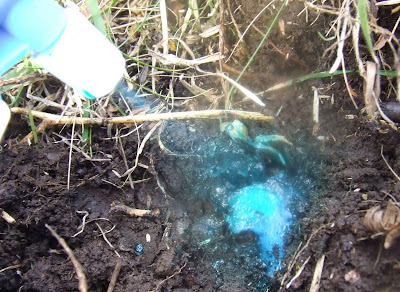 After a summer controlling Himalayan balsam in the Lower Ness catchment, Steve and his two colleagues had earned a trip to the seaside with Tom Prescott of Butterfly Conservation Scotland.
After a summer controlling Himalayan balsam in the Lower Ness catchment, Steve and his two colleagues had earned a trip to the seaside with Tom Prescott of Butterfly Conservation Scotland.These cliffs on the west coast of Mull support a rare moth and a well-established population of the bush Cotoneaster microphyllus, a native of the Himalayas. Gardeners are encouraged to plant Cotoneaster for its berries, which are attractive to birds. Unfortunately, the birds then go and plant it where it is less welcome.





